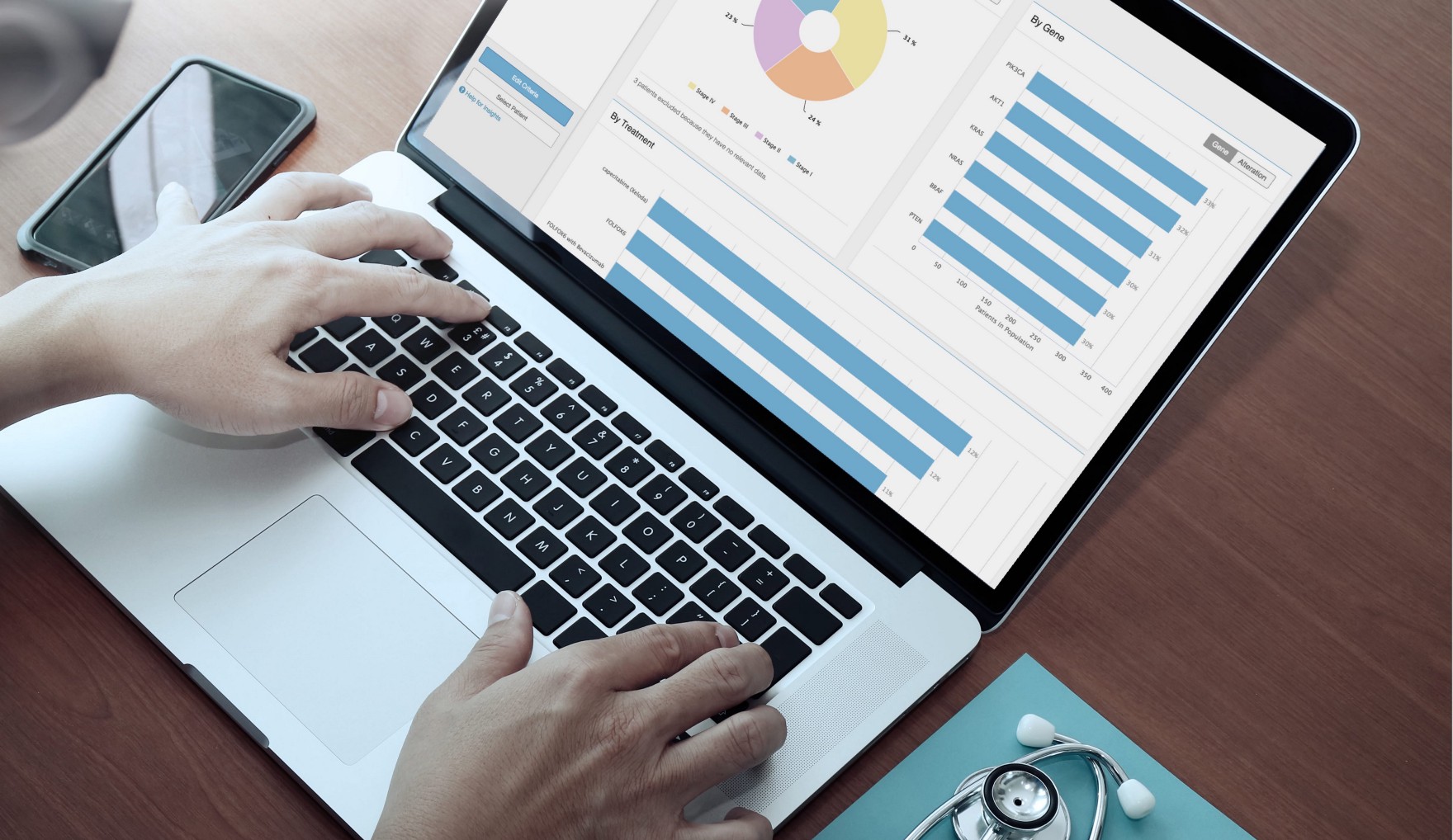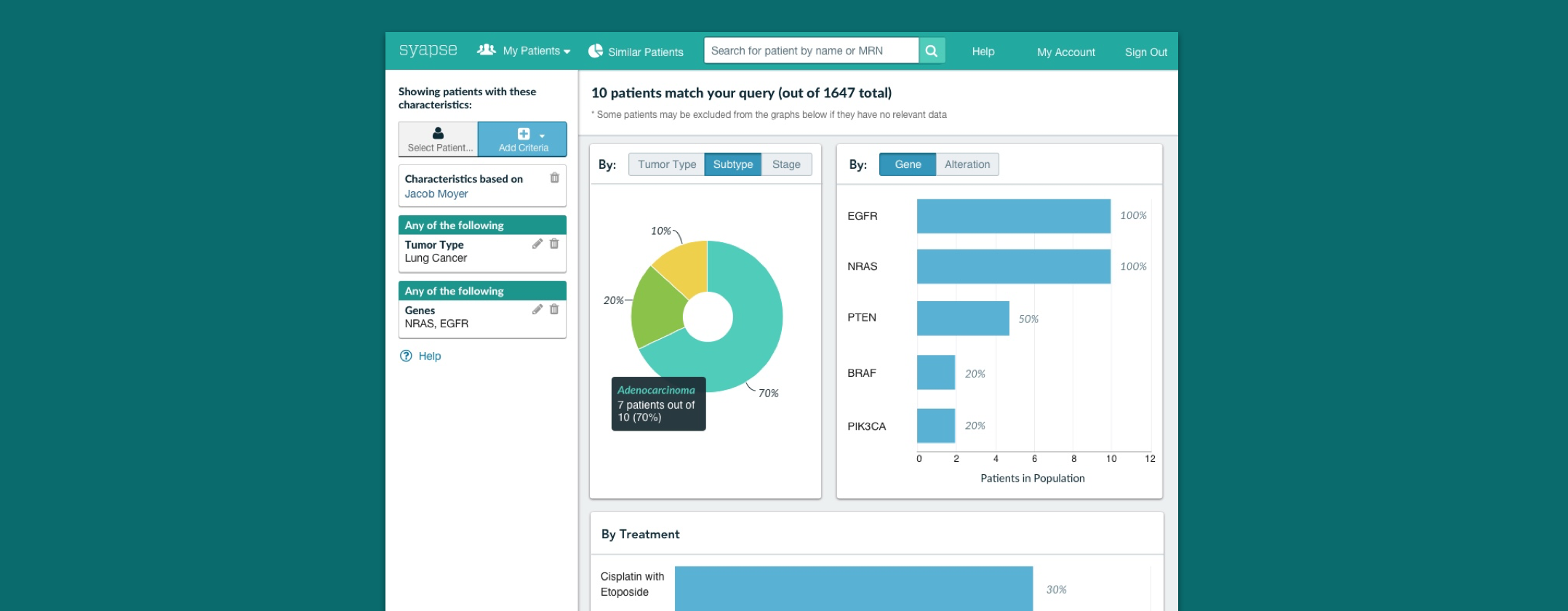Similar Patients
Syapse Oncology Web Capability
With Syapse, oncologists can view treatment data for patients across the entire health system, based on tumor type, stage, genomic variants, demographics, and other clinical parameters. This population-wide view enables oncologists to recommend a targeted drug based on institutional prescribing patterns, reducing variation in care.
My Role & Team
Lead Product Designer
I worked on Similar Patients from conception to implementation - and continue refine, build and improve the feature today. This includes:
- User Research
- Iterative Design
- Translation to Product Development
Team
I worked closely with the product manager from the minimum viable version of the feature to continuous improvements on the feature. Together, we collaborated with stakeholders and engineering teams to define, build and improve Similar Patients.






